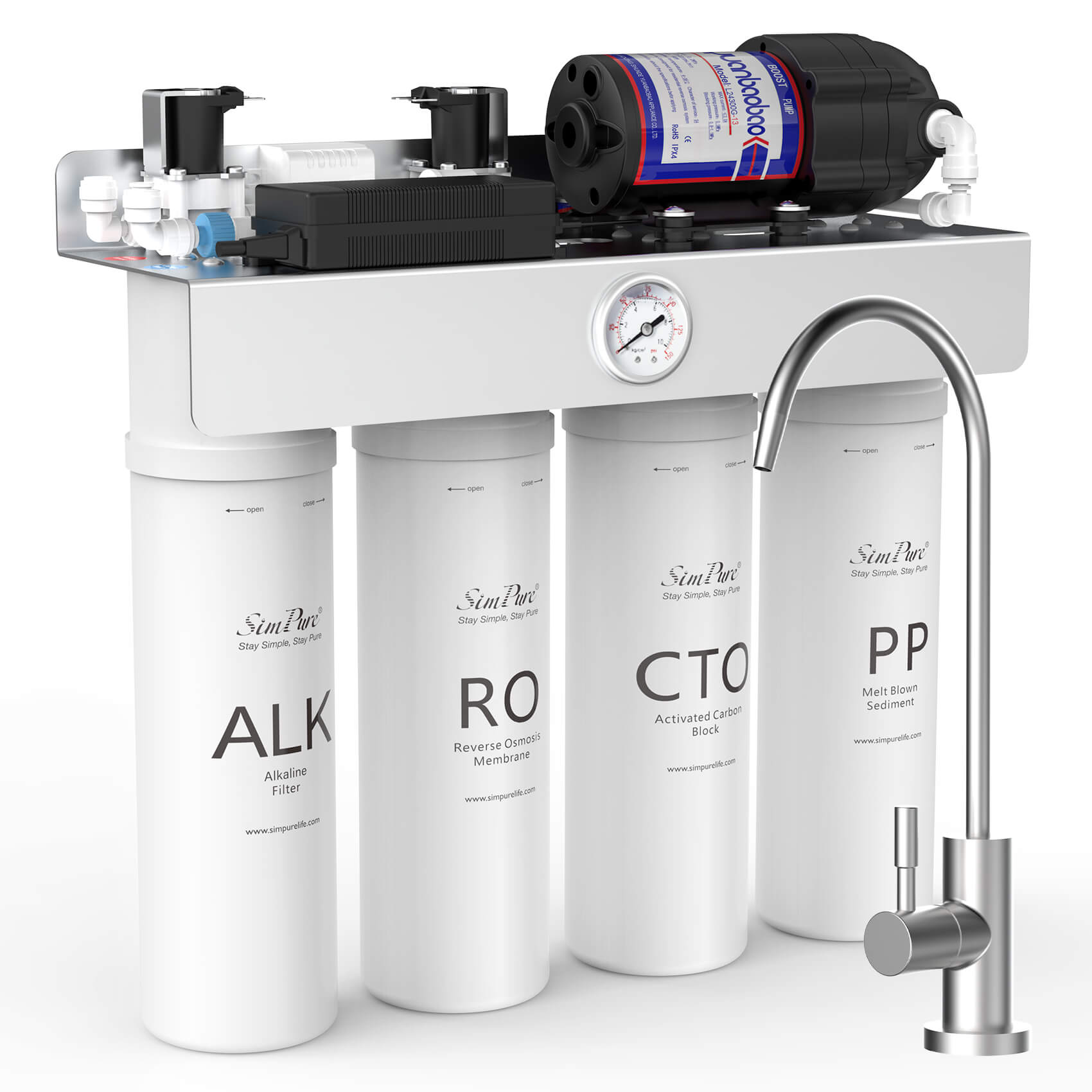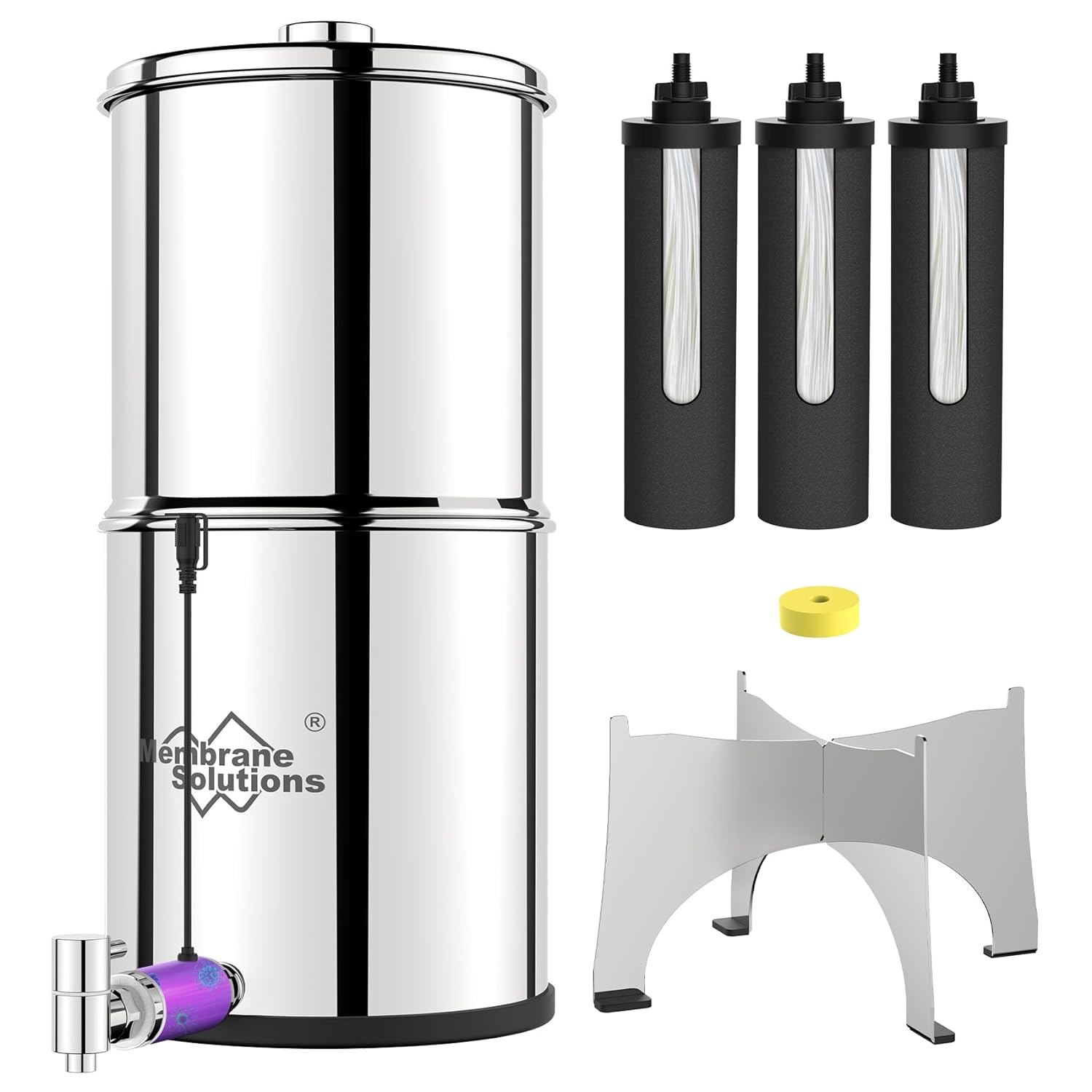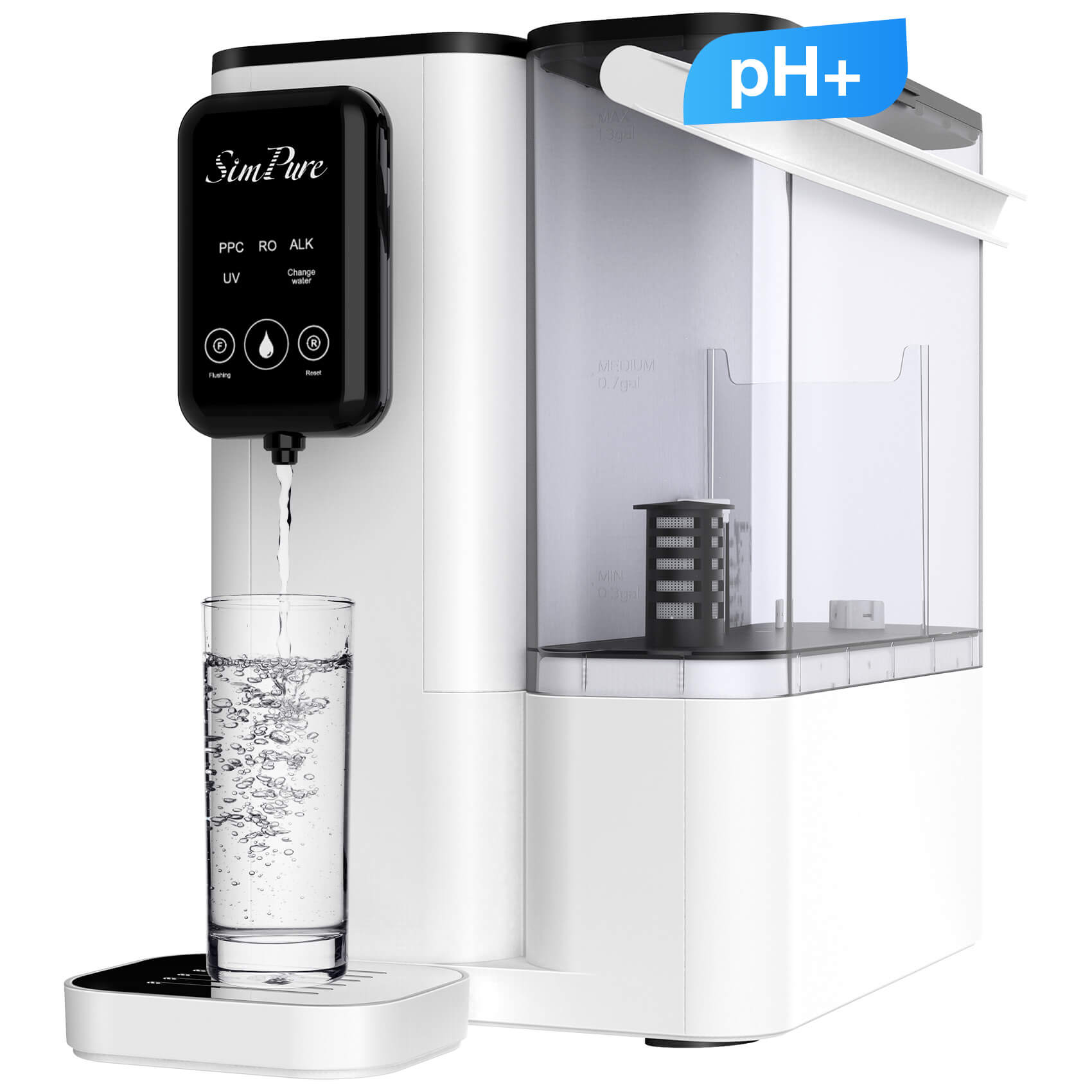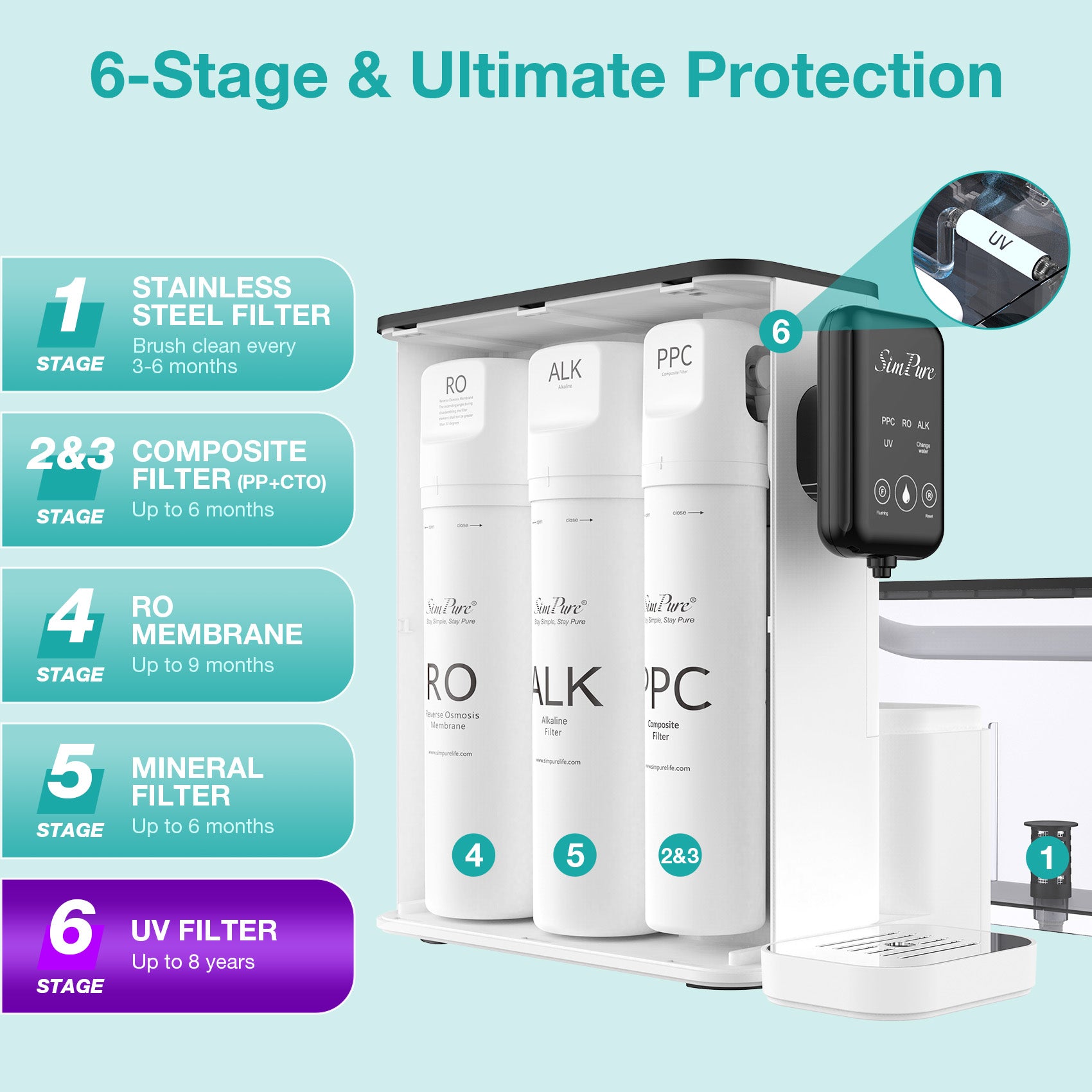Why Should I Replace Water Filters?
“The filter element does not look dirty, but there are many hidden impurities!”
In the replacement of the filter element, many people see the removed color of the filter element is not deep, and feel that this filter element does not need to be replaced.
The color depth of the filter can only directly reflect the concentration level of particulate matter impurities in the water, such as the high concentration of impurities in the water, sediment, rust, and other content, the filter element will present earth yellow, dark brown and so on.
But the unfiltered raw water has the visible sediment, rust, debris, eggs, etc., and there are also invisible all sorts of bacteria, viruses, residual chlorine, heavy metals, and other substances, those who can't see very tiny bacteria, viruses, heavy metals, etc., They were to intercept, but they did not disappear, and they will adhere to the core wall. Over time, these accumulated impurities are a potential source of secondary pollution. So, the filter element used for a long time but still looks not dirty is not really "clean".
How to Know if I Should Change the Water Filters?

1. Check water flow rate slows or decreases significantly.
Monitoring water flow rate is a crucial indicator for assessing the condition of water filters. Over time, impurities accumulate within the filter media, causing a reduction in water flow. To check this, start by observing the water flow from your faucet or dispenser. If you notice a gradual slowing down or a significant decrease in the flow rate, it suggests that the filter might be clogged or nearing the end of its effectiveness. A healthy filter allows water to pass through efficiently, but as contaminants accumulate, the flow rate diminishes. Regularly assessing the flow rate helps you proactively identify when it's time to change the water filter, ensuring that your filtration system continues to deliver clean and clear water for consumption.
2. Monitor unusual taste or odor in the water.
Monitoring for unusual taste or odor in the water involves using your senses to detect any changes that might indicate a need for filter replacement. If you notice a peculiar taste or an unpleasant odor in your drinking water, it could be a sign that the water filters are no longer effectively removing impurities. Contaminants such as bacteria, chlorine, or sediment can affect the taste and smell of water, and a functioning water filter should effectively eliminate or reduce these issues.
To perform this check, take a moment to smell and taste a sample of your tap water. If it deviates from its usual, neutral profile, it suggests a potential problem with the water filtration system. Keep in mind that this method relies on your sensory perception, so it's essential to be familiar with the normal characteristics of your water to identify any notable changes.
3. Refer to manufacturer's recommended filter replacement timeframe.
Manufacturers provide specific guidelines for replacing water filters to ensure optimal performance and water quality. To adhere to the manufacturer's recommended filter replacement timeframe, consult the product's user manual or documentation. Manufacturers determine these intervals based on factors such as filter capacity, usage patterns, and the type of contaminants the filter is designed to remove. Typically, these recommendations are expressed in terms of months or gallons filtered.
For instance, a manufacturer might advise replacing the filter every six months or after filtering a certain number of gallons. It's crucial to follow these guidelines as exceeding the recommended timeframe could compromise the filter's ability to effectively remove contaminants, leading to potential health risks.
4. Inspect for visible signs of dirt or discoloration.
Inspecting for visible signs of dirt or discoloration is a straightforward method to determine if water filters need replacement. Begin by visually examining the filter element or cartridge. If you notice any accumulation of sediment, particles, or discoloration on the filter surface, it indicates that the filter is actively capturing impurities from the water. Dirt and discoloration are tangible indicators of the filter's effectiveness in trapping contaminants. Additionally, some filters may have transparent casings, allowing direct observation of the trapped particles.
Regularly inspecting the filter for these visible signs ensures that you catch any deterioration or clogging early on, preventing potential issues with water quality. Keep in mind that the degree of contamination depends on the water source and usage frequency, so adapt the inspection frequency accordingly. If the filter appears heavily soiled or discolored, it's a clear signal that it's time to replace it to maintain optimal water purification and ensure the continued delivery of clean and safe drinking water.
5. Use a water quality test kit for accurate assessment.
To use a water quality test kit for assessing the need to change water filters, follow these steps. First, obtain a water quality test kit, available at hardware or home improvement stores. Collect a sample of your tap water in a clean container. Follow the kit's instructions for testing, usually involving adding reagents or strips to the water sample. The test will indicate various parameters such as pH, contaminants, and water hardness. Compare the results to recommended values for your area or the specifications of your water filtration system. If the test reveals high levels of contaminants or a significant deviation from optimal values, it suggests that your water filters may no longer be effectively purifying the water. Consider replacing the filters to ensure continued delivery of clean and safe drinking water for your household.
6. Follow indicator lights on filter system, if available.
If your water filtration system is equipped with indicator lights, it simplifies the process of determining when to change the filters. These lights are designed to provide a visual cue based on the system's internal monitoring such as our SimPure Y7P series RO water disenpers. Typically, when the filters are functioning optimally, the indicator light remains steady or displays a certain color. However, as the filters accumulate impurities and reach the end of their effective lifespan, the light may change, blink, or turn a different color.
To follow these indicator lights, consult the user manual of your specific water filtration system. The manual will outline the meanings of different light patterns and colors. Common indications include red or flashing lights to signal the need for filter replacement. Regularly check the status of these lights, and when a change is indicated, promptly replace the filters. If you are seeking common water filter replacement or customs of SimPure, visit our Replacement Water Filters Page to find your water filter replacement!
Specific Answer: How Often to Change Water Filters for Different Types?
The replacement cycle of different types of filter elements is different. All levels of filter function and role is also different. Here we take a look at the replacement cycle of these common filter elements.
- The PP cotton filter element can effectively remove all kinds of particle impurities in the filtered liquid. Multi-layer deep structure, the large amount of pollution; Large filtration flow, small pressure difference; Does not contain any chemical adhesive, more sanitary and safe; Acid, alkali, organic solution, oil, good chemical stability; Set surface, deep, coarse and fine filter as one; It has the characteristics of large flow, corrosion resistance, high-pressure resistance, and low cost. To block the water rust, silt, eggs, and other large particles. Replace it every 2-3 months.
-
Activated Carbon Filters absorb contaminants through a porous surface. Over time, this surface becomes saturated, diminishing filtration efficiency. A replacement every 3 to 6 months ensures consistent removal of impurities and maintains water quality.

- Reverse osmosis systems purify water by pushing it through a semi-permeable membrane. According to a RO membrane, the pore size RO membrane is only 0.0001 micron, so a bacterium has to be reduced 4,000 times, and infectious diseases have to be reduced more than 200 times to pass through. Therefore, all the fine impurities, soluble solids, bacteria, and viruses in the water cannot penetrate the high-precision RO membrane. Regular replacement, ranging from 6 months to 2 years, prevents the membrane from clogging and maintains optimal filtration performance.
- UV purifiers use ultraviolet light to neutralize harmful microorganisms. Annual replacement is recommended to ensure the UV lamp remains effective in disinfecting water and safeguarding against bacteria and viruses.
- Sediment filters trap particles like sand and rust. Changing them every 6 months prevents clogs and maintains water flow, ensuring effective removal of larger contaminants.
In short, the water purification technology is different, so the filtration process and filter element have different functional characteristics and service life, the actual service life of the filter element of the water purifier depends on the local water quality and the frequency and amount of use, and frequent washing is conducive to extending the service life of the filter element of the water purifier.
In addition, different areas of different water quality will also have different times, in short, consumers need to combine the local actual environment under the guidance of businesses, and replace it on time, to ensure healthy drinking water. The water purifier is related to the health of yourself and your family. You would rather replace the filter element more frequently than overload and super time use, which will make the water pollution more serious. Of course, when buying a water purifier, or saying hello to the filter replacement time, it is best to choose the filter can be a general brand, to avoid the future can not find after-sales service personnel and can not replace the filter, at this time other types of filter can also be installed on the use.





























